Abstract
OBJECTIVE: This study compares an initial group of patients undergoing laparoscopic live donor nephrectomy to a group of patients undergoing open donor nephrectomy to assess the efficacy, morbidity, and patient recovery after the laparoscopic technique. SUMMARY BACKGROUND DATA: Recent data have shown the technical feasibility of harvesting live renal allografts using a laparoscopic approach. However, comparison of donor recovery, morbidity, and short-term graft function to open donor nephrectomy has not been performed previously. METHODS: An initial series of patients undergoing laparoscopic live donor nephrectomy were compared to historic control subjects undergoing open donor nephrectomy. The groups were matched for age, gender, race, and comorbidity. Graft function, intraoperative variables, and clinical outcome of the two groups were compared. RESULTS: Laparoscopic donor nephrectomy was attempted in 70 patients and completed successfully in 94% of cases. Graft survival was 97% versus 98% (p = 0.6191), and immediate graft function occurred in 97% versus 100% in the laparoscopic and open groups, respectively (p = 0.4961). Blood loss, length of stay, parenteral narcotic requirements, resumption of diet, and return to normal activity were significantly less in the laparoscopic group. Mean warm ischemia time was 3 minutes after laparoscopic harvest. Morbidity was 14% in the laparoscopic group and 35% in the open group. There was no mortality in either group. CONCLUSIONS: Laparoscopic live donor nephrectomy can be performed with morbidity and mortality comparable to open donor nephrectomy, with substantial improvements in patient recovery after the laparoscopic approach. Initial graft survival and function rates are equal to those of open donor nephrectomy, but longer follow-up is necessary to confirm these observations.
Full text
PDF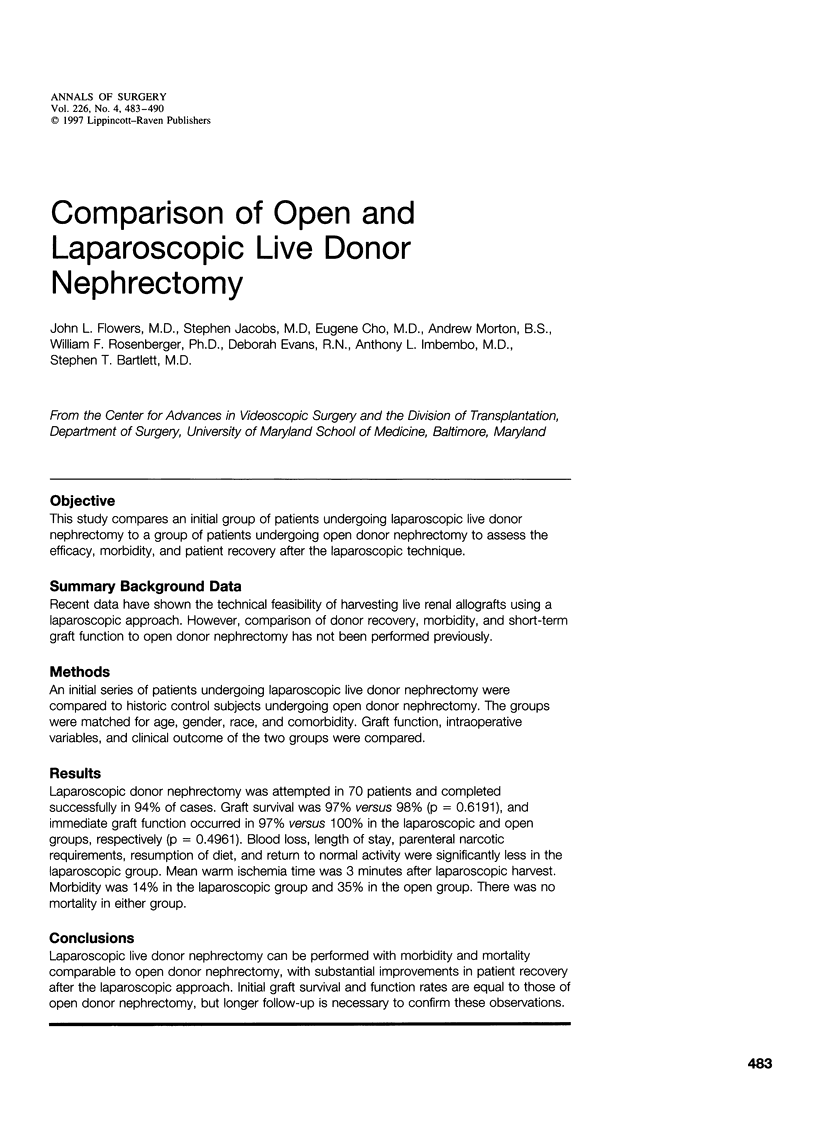
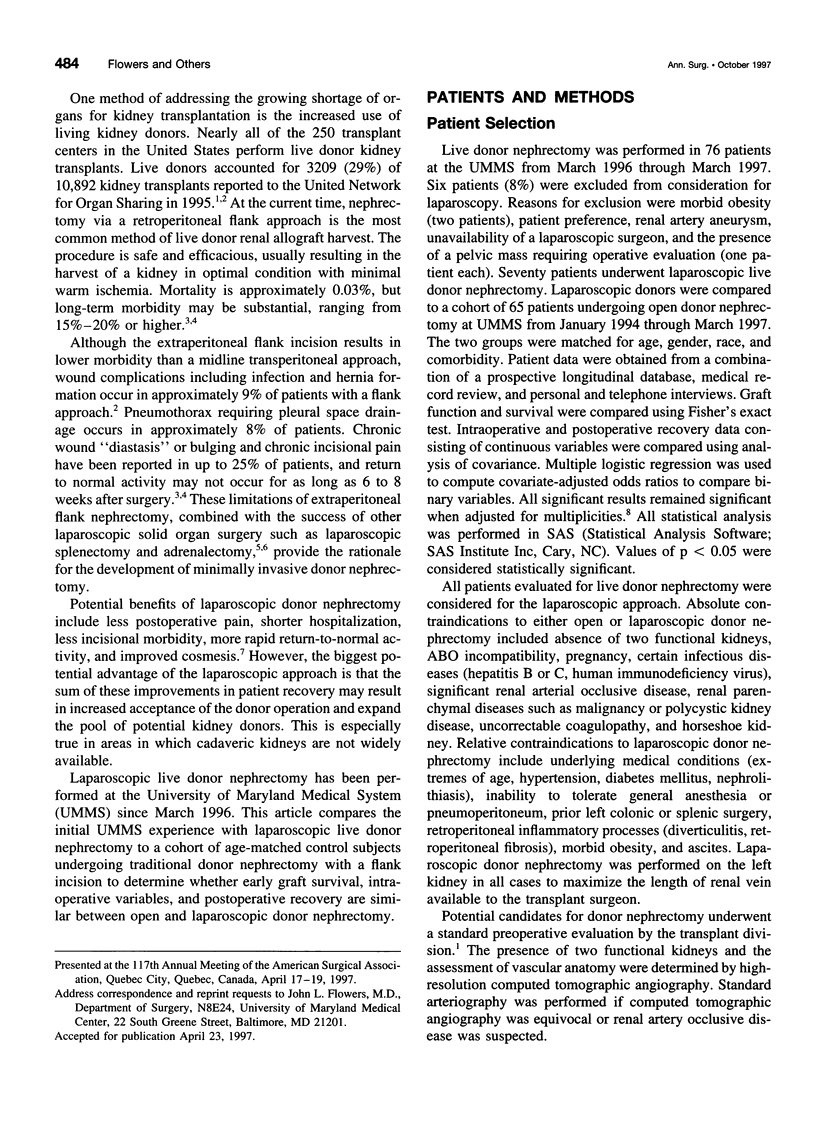
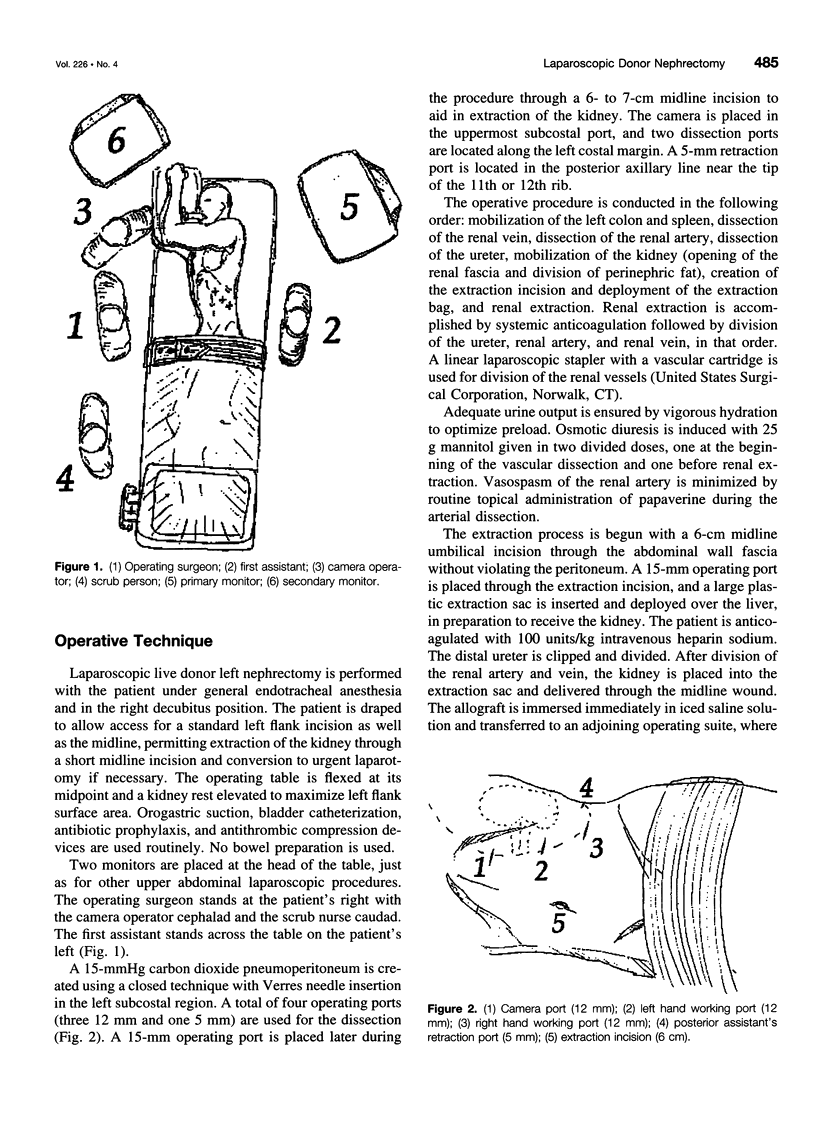
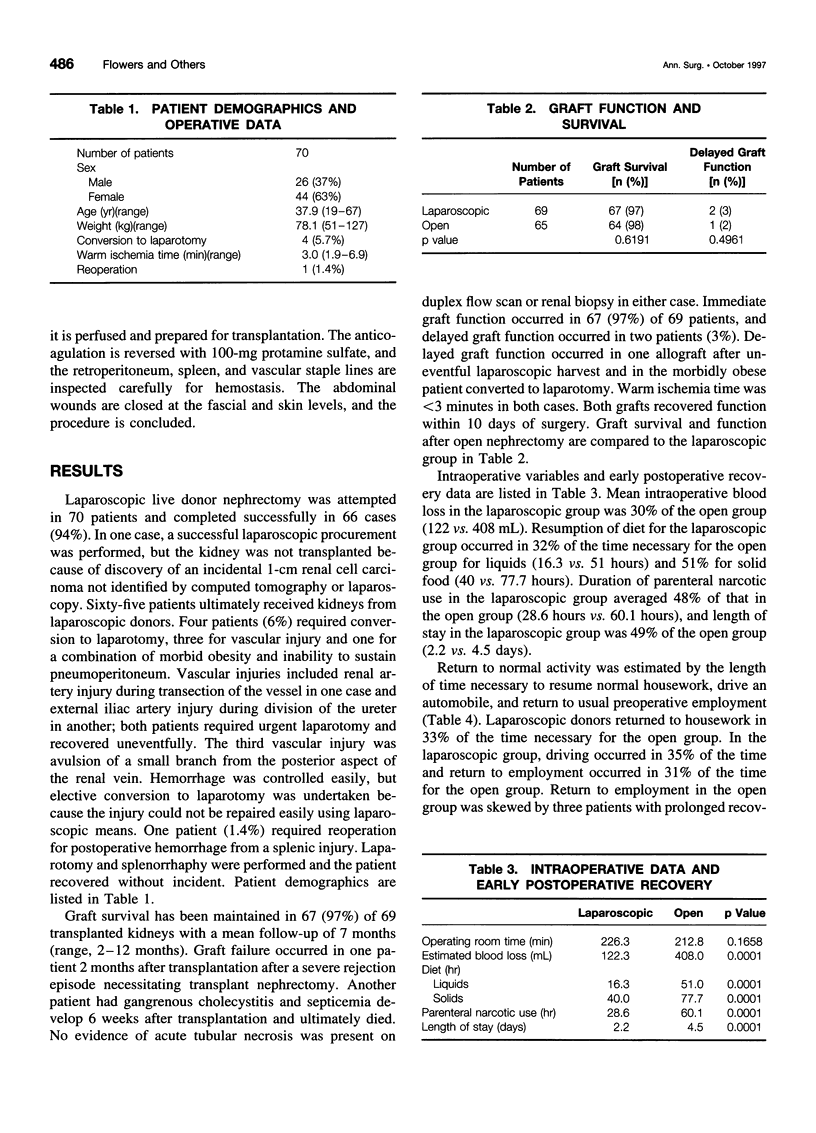
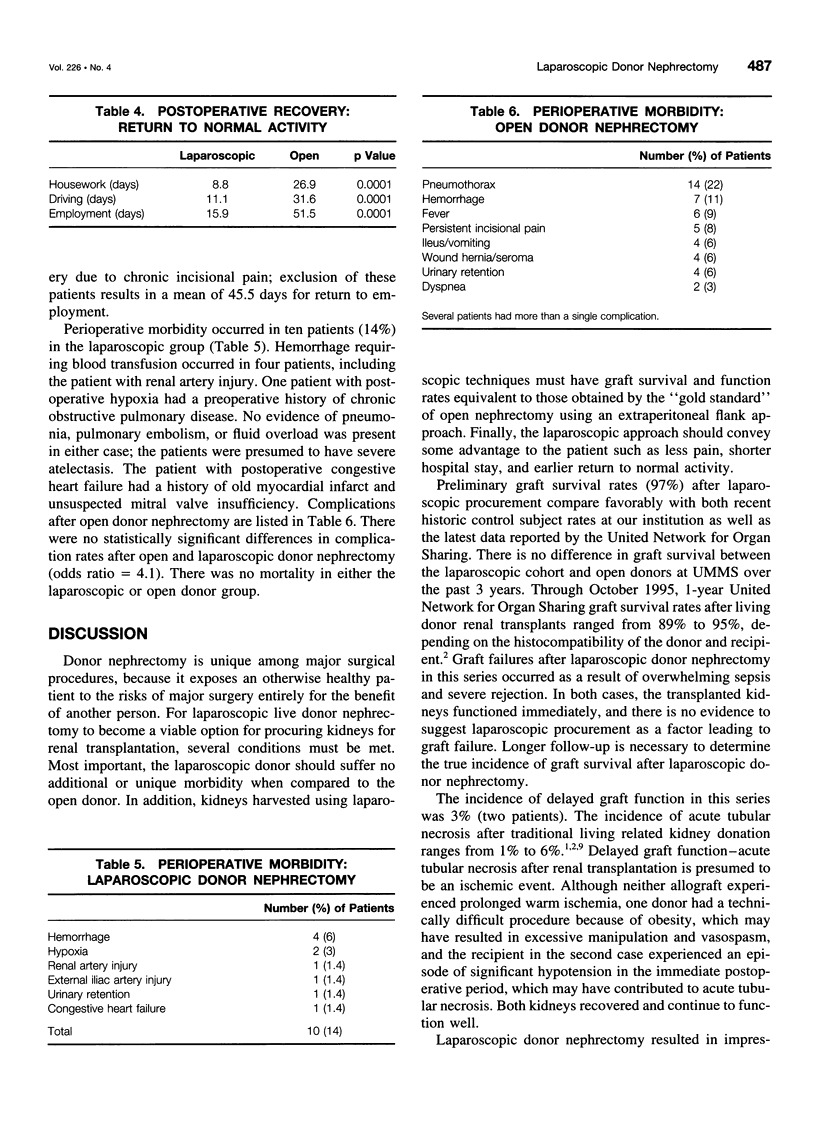
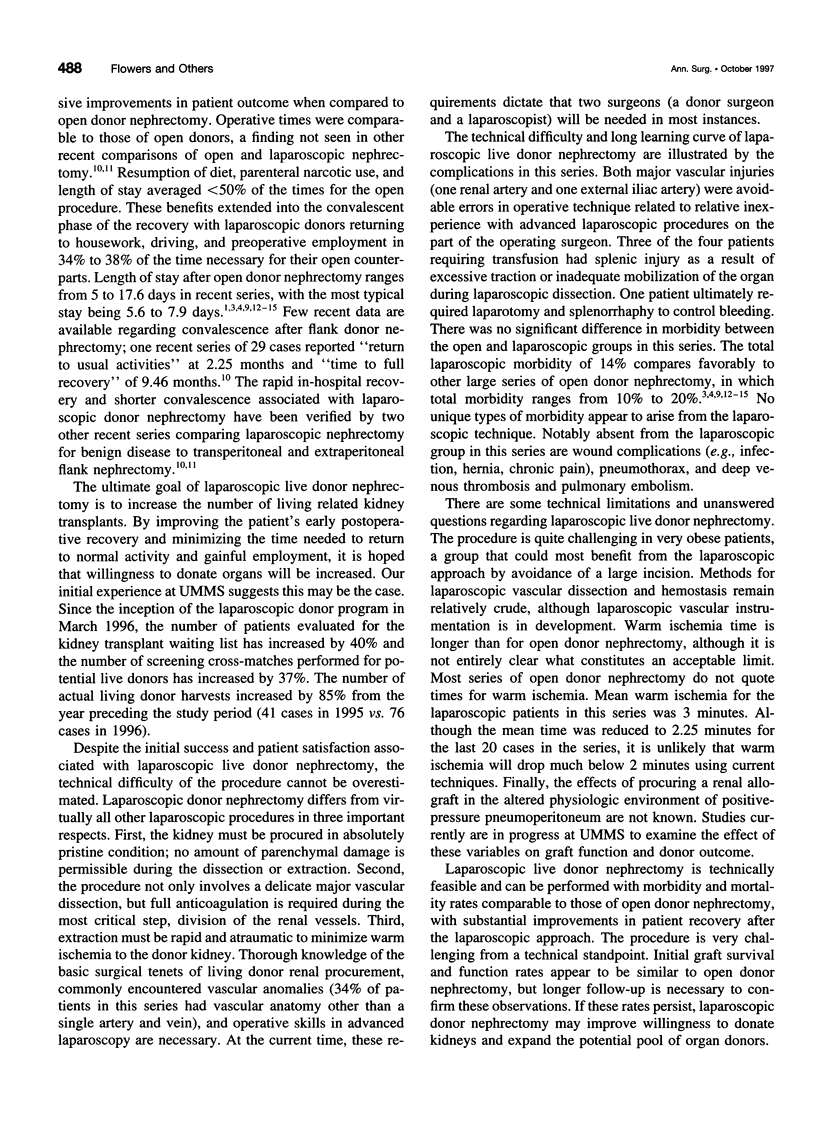

Selected References
These references are in PubMed. This may not be the complete list of references from this article.
- Blohmé I., Fehrman I., Nordén G. Living donor nephrectomy. Complication rates in 490 consecutive cases. Scand J Urol Nephrol. 1992;26(2):149–153. doi: 10.1080/00365599.1992.11690446. [DOI] [PubMed] [Google Scholar]
- Dunn J. F., Nylander W. A., Jr, Richie R. E., Johnson H. K., MacDonell R. C., Jr, Sawyers J. L. Living related kidney donors. A 14-year experience. Ann Surg. 1986 Jun;203(6):637–643. doi: 10.1097/00000658-198606000-00008. [DOI] [PMC free article] [PubMed] [Google Scholar]
- Flowers J. L., Lefor A. T., Steers J., Heyman M., Graham S. M., Imbembo A. L. Laparoscopic splenectomy in patients with hematologic diseases. Ann Surg. 1996 Jul;224(1):19–28. doi: 10.1097/00000658-199607000-00004. [DOI] [PMC free article] [PubMed] [Google Scholar]
- Gagner M., Lacroix A., Prinz R. A., Bolté E., Albala D., Potvin C., Hamet P., Kuchel O., Quérin S., Pomp A. Early experience with laparoscopic approach for adrenalectomy. Surgery. 1993 Dec;114(6):1120–1125. [PubMed] [Google Scholar]
- Kerbl K., Clayman R. V., McDougall E. M., Gill I. S., Wilson B. S., Chandhoke P. S., Albala D. M., Kavoussi L. R. Transperitoneal nephrectomy for benign disease of the kidney: a comparison of laparoscopic and open surgical techniques. Urology. 1994 May;43(5):607–613. doi: 10.1016/0090-4295(94)90171-6. [DOI] [PubMed] [Google Scholar]
- Liounis B., Roy L. P., Thompson J. F., May J., Sheil A. G. The living, related kidney donor: a follow-up study. Med J Aust. 1988 May 2;148(9):436-7,440-4. doi: 10.5694/j.1326-5377.1988.tb139566.x. [DOI] [PubMed] [Google Scholar]
- Parra R. O., Perez M. G., Boullier J. A., Cummings J. M. Comparison between standard flank versus laparoscopic nephrectomy for benign renal disease. J Urol. 1995 Apr;153(4):1171–1174. [PubMed] [Google Scholar]
- Rosenberger W. F. Dealing with multiplicities in pharmacoepidemiologic studies. Pharmacoepidemiol Drug Saf. 1996 Mar;5(2):95–100. doi: 10.1002/(SICI)1099-1557(199603)5:2<95::AID-PDS228>3.0.CO;2-4. [DOI] [PubMed] [Google Scholar]
- Schulam P. G., Kavoussi L. R., Cheriff A. D., Averch T. D., Montgomery R., Moore R. G., Ratner L. E. Laparoscopic live donor nephrectomy: the initial 3 cases. J Urol. 1996 Jun;155(6):1857–1859. [PubMed] [Google Scholar]
- Streem S. B., Novick A. C., Steinmuller D. R., Bretan P. N., Jr, Graneto D. Results of living-donor nephrectomy: considerations for the donor and recipient. Transplant Proc. 1989 Feb;21(1 Pt 2):1951–1952. [PubMed] [Google Scholar]
- Streem S. B., Novick A. C., Steinmuller D. R., Graneto D. Flank donor nephrectomy: efficacy in the donor and recipient. J Urol. 1989 May;141(5):1099–1101. doi: 10.1016/s0022-5347(17)41181-5. [DOI] [PubMed] [Google Scholar]
- Waples M. J., Belzer F. O., Uehling D. T. Living donor nephrectomy: a 20-year experience. Urology. 1995 Feb;45(2):207–210. doi: 10.1016/0090-4295(95)80006-9. [DOI] [PubMed] [Google Scholar]
- Yasumura T., Nakai I., Oka T., Ohmori Y., Aikawa I., Nakaji K., Yoshimura N., Nakane Y. Experience with 247 living related donor nephrectomy cases at a single institution in Japan. Jpn J Surg. 1988 May;18(3):252–258. doi: 10.1007/BF02471441. [DOI] [PubMed] [Google Scholar]


